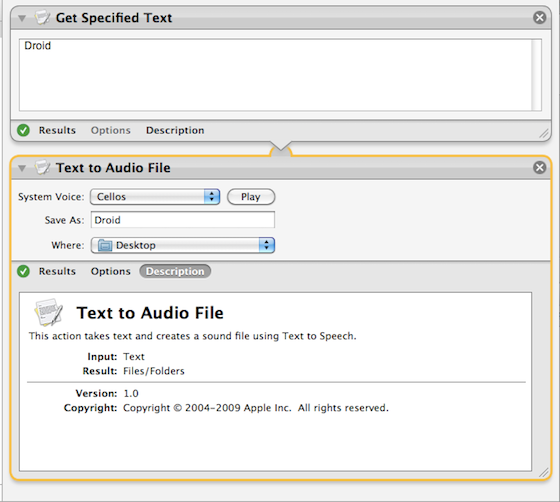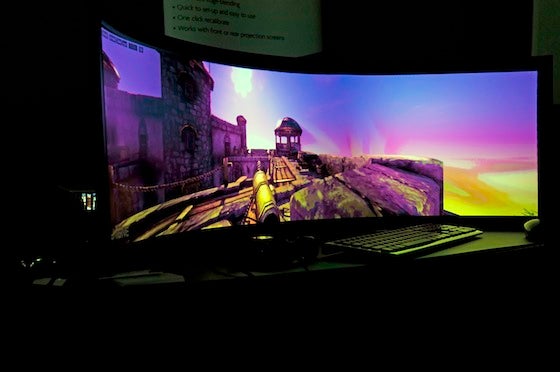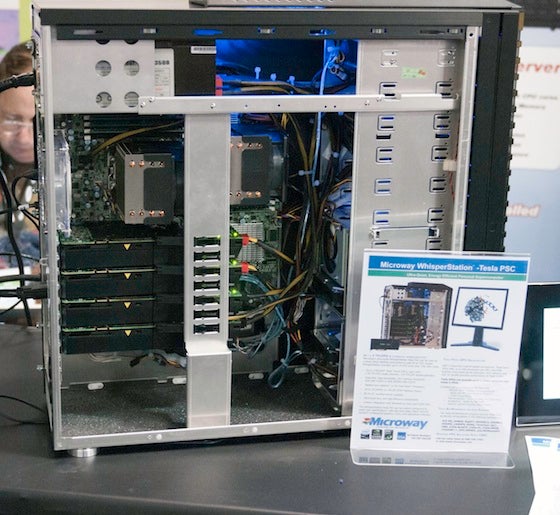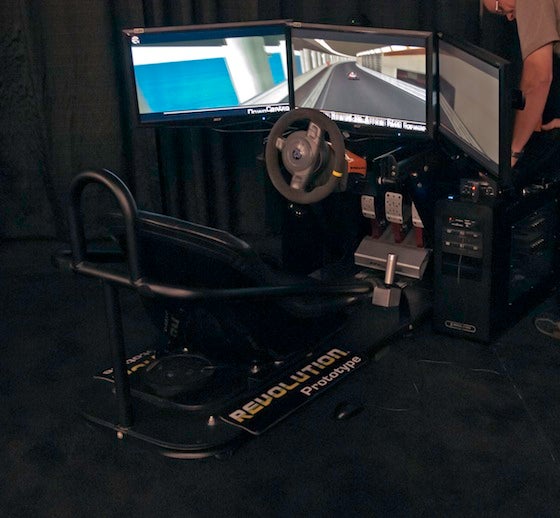TOSHIBA AND BEST BUY COLLABORATE TO INTRODUCE CHILDREN'S LAPTOP
New Satellite L635 Kids' PC: Features Wipeable Keyboard and Software and Entertainment Suite Designed to Give Parents Peace of Mind
IRVINE, Calif. – Sept. 23, 2010 – Toshiba's Digital Products Division (DPD), a division of Toshiba America Information Systems, Inc., today announced the Satellite® L635 Kids' PC, Toshiba's first kid-centric laptop design, available exclusively at Best Buy. Designed in collaboration with Best Buy, the Satellite L635 Kids' PC is a full-size laptop made for children aged five to 10 that provides a suite of entertainment and education software and allows parents to help ensure their children are staying safe on the Web.
Technology products are rising on the wish lists of families and are particularly popular as holiday gifts. About one in four parents reported plans to buy a laptop for their school aged children, according to a Toshiba survey that was conducted with Opinion Solutions, Inc., with nearly 74 percent reporting their kids ask for gadgets for the holidays. Parents want a reliable computer that also provides a safe environment for browsing the Internet, but their current options are limited to PCs made for adults or kid-friendly netbooks and toy-like computing devices.
The Satellite L635 Kids' PC features a 13.3-inch diagonal HD display[i], a built-in DVD drive and Webcam with software designed specially with a younger user in mind.
"The laptop has traditionally been a device conceived and built for adults, and devices currently being marketed to kids are either netbooks or toy-based computers," said Jeff Barney, vice president and general manager, Toshiba America Information Systems, Inc., Digital Products Division. "As a result of this collaboration with Best Buy, we have made a product that provides the right measure of fun and entertainment for children while meeting the computing needs and security concerns of their parents."
Toshiba, Best Buy Collaboration
The Satellite L635 Kids' PC is the latest consumer-driven innovation to come out of the You Spoke, We Listened program, a collaboration between Toshiba and Best Buy that has yielded products such as the Toshiba Satellite E205. With the Satellite L635 Kids' PC, the two companies combined their consumer feedback and technical expertise to produce a laptop from the ground up for children that is like no other.
"People today expect well thought out laptop offerings customized to meet their expectations, and partnering with Toshiba makes it possible," said Jason Bonfig, vice president of computing at Best Buy. "We set out to design a laptop that better serves the function and content needs of families, and the result was the Satellite L635 Kids' PC."
Since their arrival in fall 2008, products resulting from the Best Buy You Spoke, We Listened program have changed the dynamics of how computers and other technology are developed. Each generation originates with insight gleaned from sources such as Best Buy's own customers and employees into desired features, styling and performance. The company then works closely with Toshiba to translate those customer expectations into a unique laptop design that solves for customer needs with the right hardware and functionality.
Unique Features
Designed with kids in mind, the laptop boasts a unique wipeable keyboard, allowing for easy cleaning of smudges left by messy hands and a no-gloss Dura-cross textured finish that helps resist fingerprints.
The accompanying software gives parents the opportunity to help protect their kids from dangers online while providing a fun and safe universe for children to explore the Internet. The laptop comes pre-loaded with KidZui, an Internet browser made for children, as well as Net Nanny, which allows parents to set boundaries on how the laptop is used. The combination of these two programs allows the security of the laptop to adapt as children mature.
For all its kid-ready features, the laptop stands out for still having the power of a standard PC, making it a product to be used and enjoyed by the entire family. Pre-installed entertainment includes two Disney movies and the family-friendly LEGO Batman game.
Availability
The Satellite L635 Kids' PC is available exclusively at Best Buy beginning Sept. 26, 2010.
Image Gallery: http://bit.ly/ToshibaKidsPC
Connect with Toshiba on Twitter at twitter.com/ToshibaLaptops and on Facebook at www.facebook.com/ToshibaLaptopsUS.
About Toshiba America Information Systems, Inc. (TAIS)
Headquartered in Irvine, Calif., TAIS is comprised of four business units: Digital Products Division, Imaging Systems Division, Storage Device Division, and Telecommunication Systems Division. Together, these divisions provide mobile products and solutions, including industry-leading portable computers; televisions, TV/DVD Combination products, Blu-ray Disc and DVD products, and portable devices; imaging products for the security, medical and manufacturing markets; storage products for automotive, computer and consumer electronics applications; and IP business telephone systems with unified communications, collaboration and mobility applications. TAIS provides sales, marketing and services for its wide range of products in the United States and Latin America.
TAIS is an independent operating company owned by Toshiba America, Inc., a subsidiary of Toshiba Corporation. Toshiba Corporation is a world leader and innovator in high technology, a diversified manufacturer and marketer of advanced electronic and electrical products. These products span from information & communications systems; digital consumer products; electronic devices and components; as well as power systems including nuclear energy; industrial and social infrastructure systems; and home appliances. Toshiba was founded in 1875, and today operates a global network of more than 740 companies, with 204,000 employees worldwide and annual sales surpassing $68 billion (6.3 Trillion Yen). For more information on Toshiba visit www.toshiba.com.
About Best Buy Co., Inc.
With operations in the United States, Canada, Europe, China, Mexico and Turkey, Best Buy is a multinational retailer of technology and entertainment products and services with a commitment to growth and innovation. The Best Buy family of brands and partnerships collectively generates more than $49 billion in annual revenue and includes brands such as Best Buy; Best Buy Mobile; Audiovisions; The Carphone Warehouse; Future Shop; Geek Squad, Jiangsu Five Star; Magnolia Audio Video; Napster; Pacific Sales; and The Phone House. Approximately 180,000 employees apply their talents to help bring the benefits of these brands to life for customers through retail locations, multiple call centers and Web sites, in-home solutions, product delivery and activities in our communities. Community partnership is central to the way we do business at Best Buy. In fiscal 2010, we donated a combined $25.2 million to improve the vitality of the communities where our employees and customers live and work. For more information about Best Buy, visit www.bestbuy.com
###
© 2010 Toshiba America Information Systems, Inc. All rights reserved. All product, service and company names are trademarks, registered trademarks or service marks of their respective owners. Information including, without limitation, product prices, specifications, availability, content of services, and contact information is subject to change without notice.
View the original article here







 So, Apple's talked about putting the iPhone on Verizon, Verizon wants the phone... why can't we get these two crazy kids together? Well, Verizon CEO Ivan Seidenberg touched on that topic in a talk to investors at the Goldman Sachs conference today. "We don't feel like we have an iPhone deficit. We would love to carry it when we get there, but we have to earn it," Seidenberg said, walking a fine line between complimenting the phone and making it clear that Verizon still has a good lineup. Ivan also mixed in a basketball analogy to sweeten the deal: "This is like the Knicks getting Carmelo Anthony. Like it would be very good if the Knicks got Carmelo Anthony. But they have to play the game whether they get Carmelo Anthony, right?" Ivan hinted heavily that Verizon's forthcoming 4G LTE network could be the golden ticket, and while this isn't a new theory, it's unclear (and a little disconcerting) if he's just as in the dark as we are as to whether or not Apple will come around once LTE is up and running. Still, he put on a brave face: "At some point, Apple will get with the program." Our suggestion? Bake Steve a cake. Couldn't hurt!
So, Apple's talked about putting the iPhone on Verizon, Verizon wants the phone... why can't we get these two crazy kids together? Well, Verizon CEO Ivan Seidenberg touched on that topic in a talk to investors at the Goldman Sachs conference today. "We don't feel like we have an iPhone deficit. We would love to carry it when we get there, but we have to earn it," Seidenberg said, walking a fine line between complimenting the phone and making it clear that Verizon still has a good lineup. Ivan also mixed in a basketball analogy to sweeten the deal: "This is like the Knicks getting Carmelo Anthony. Like it would be very good if the Knicks got Carmelo Anthony. But they have to play the game whether they get Carmelo Anthony, right?" Ivan hinted heavily that Verizon's forthcoming 4G LTE network could be the golden ticket, and while this isn't a new theory, it's unclear (and a little disconcerting) if he's just as in the dark as we are as to whether or not Apple will come around once LTE is up and running. Still, he put on a brave face: "At some point, Apple will get with the program." Our suggestion? Bake Steve a cake. Couldn't hurt!  posted Sep 23rd 2010 5:42PM
posted Sep 23rd 2010 5:42PM  Sound familiar? For Windows Phone 7, seems like Microsoft's taking an angle shared by both Apple and Google on a feature that enjoys a tenuous relationship at best with network operators, saying that data tethering will be available but it'll be up to carriers to decide whether to offer it. Though feature removal rarely goes over well with potential buyers of Windows Phone 7 devices, it's actually a pretty easy call from Microsoft's perspective: the company needs as much carrier support as it can get right now to ramp up a fresh mobile platform going against entrenched giants with several years' head start, and enforcing the availability of a feature that tends to choke 3G networks probably wouldn't be a great way to get that. Needless to say, we've little doubt that the dev community will find a way around any roadblocks in short order -- but officially, anyhow, the ball is in the operators' courts.
Sound familiar? For Windows Phone 7, seems like Microsoft's taking an angle shared by both Apple and Google on a feature that enjoys a tenuous relationship at best with network operators, saying that data tethering will be available but it'll be up to carriers to decide whether to offer it. Though feature removal rarely goes over well with potential buyers of Windows Phone 7 devices, it's actually a pretty easy call from Microsoft's perspective: the company needs as much carrier support as it can get right now to ramp up a fresh mobile platform going against entrenched giants with several years' head start, and enforcing the availability of a feature that tends to choke 3G networks probably wouldn't be a great way to get that. Needless to say, we've little doubt that the dev community will find a way around any roadblocks in short order -- but officially, anyhow, the ball is in the operators' courts. 
 Right now, the highest resolution desktop display you can get for a PC is a 30-inch monitor that runs at 2560 by 1600 pixels--about four megapixels. If you want more than that, you can have multiple monitors, but the bezels tend to break immersion on gaming or simply get in the way for productivity apps.
Right now, the highest resolution desktop display you can get for a PC is a 30-inch monitor that runs at 2560 by 1600 pixels--about four megapixels. If you want more than that, you can have multiple monitors, but the bezels tend to break immersion on gaming or simply get in the way for productivity apps. That picture above is no joke -- that's where I ended up last night trying to revive my Droid X review unit. It was fun, in a hacky mad-scientist sort of way, but it's also really sad -- a testament to how Google approves Android device hacking with a wink and a nod, but doesn't provide any safety nets for its most passionate users.
That picture above is no joke -- that's where I ended up last night trying to revive my Droid X review unit. It was fun, in a hacky mad-scientist sort of way, but it's also really sad -- a testament to how Google approves Android device hacking with a wink and a nod, but doesn't provide any safety nets for its most passionate users.  Yes, the two hours it took me to sort out the hacked flashing software had been too much for my poor Droid X's previously-full battery, and even though it was plugged in the whole time, it doesn't charge when it's in bootloader mode. I'd gone and bricked my phone. At this point there was nothing to do but take a picture and laugh -- things had gotten wildly out of hand.
Yes, the two hours it took me to sort out the hacked flashing software had been too much for my poor Droid X's previously-full battery, and even though it was plugged in the whole time, it doesn't charge when it's in bootloader mode. I'd gone and bricked my phone. At this point there was nothing to do but take a picture and laugh -- things had gotten wildly out of hand.





 This Saturday, hundreds of hackers, designers, and entrepreneurs are going to descend upon the San Francisco Design Center Concourse for the TechCrunch Disrupt Hackathon. There will be pizza, caffeine, beer, and MacBook Pros as far as the eye can see. Most of the participants won’t leave (and many won’t sleep) until 11 am the next day, when each team will have 90 seconds to present what they’ve created to our expert panel of judges.
This Saturday, hundreds of hackers, designers, and entrepreneurs are going to descend upon the San Francisco Design Center Concourse for the TechCrunch Disrupt Hackathon. There will be pizza, caffeine, beer, and MacBook Pros as far as the eye can see. Most of the participants won’t leave (and many won’t sleep) until 11 am the next day, when each team will have 90 seconds to present what they’ve created to our expert panel of judges. 
 On Tuesday, Nvidia announced it was going to support x86 processors as a target for CUDA applications. This means that apps that are currently written to support Nvidia’s GPU line for compute applications will be able to run on standard x86 CPUs--no GPU needed.
On Tuesday, Nvidia announced it was going to support x86 processors as a target for CUDA applications. This means that apps that are currently written to support Nvidia’s GPU line for compute applications will be able to run on standard x86 CPUs--no GPU needed.

